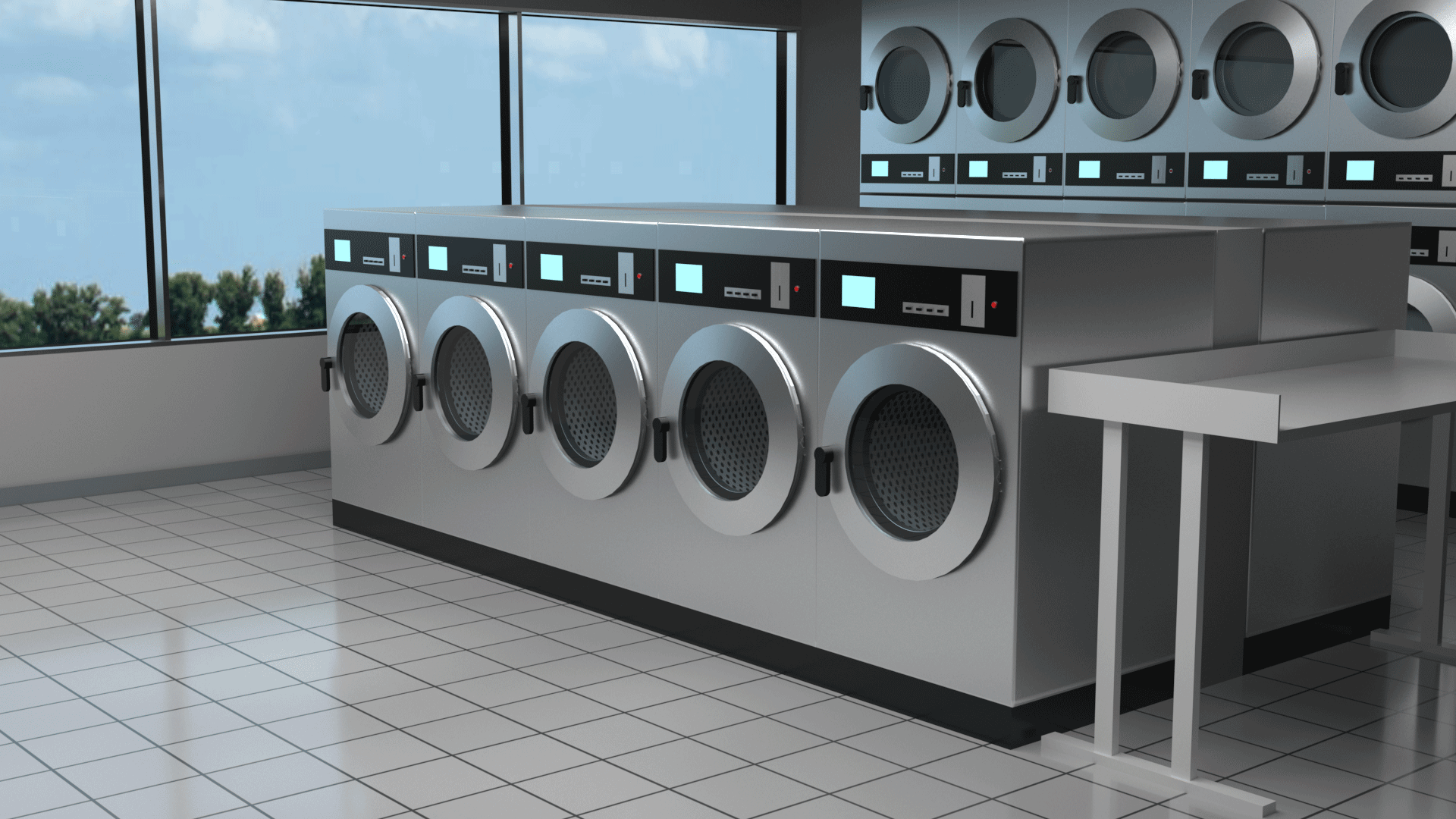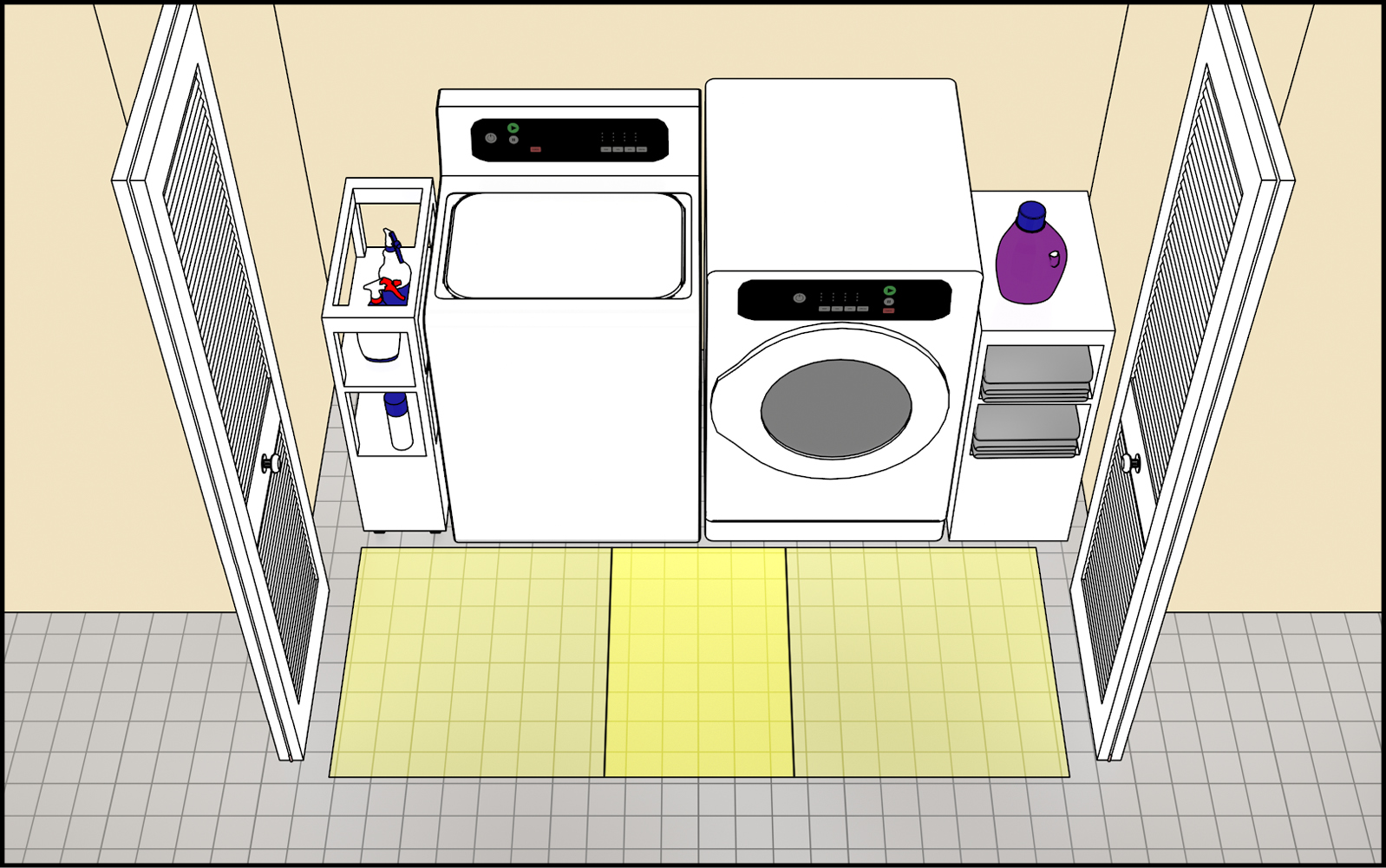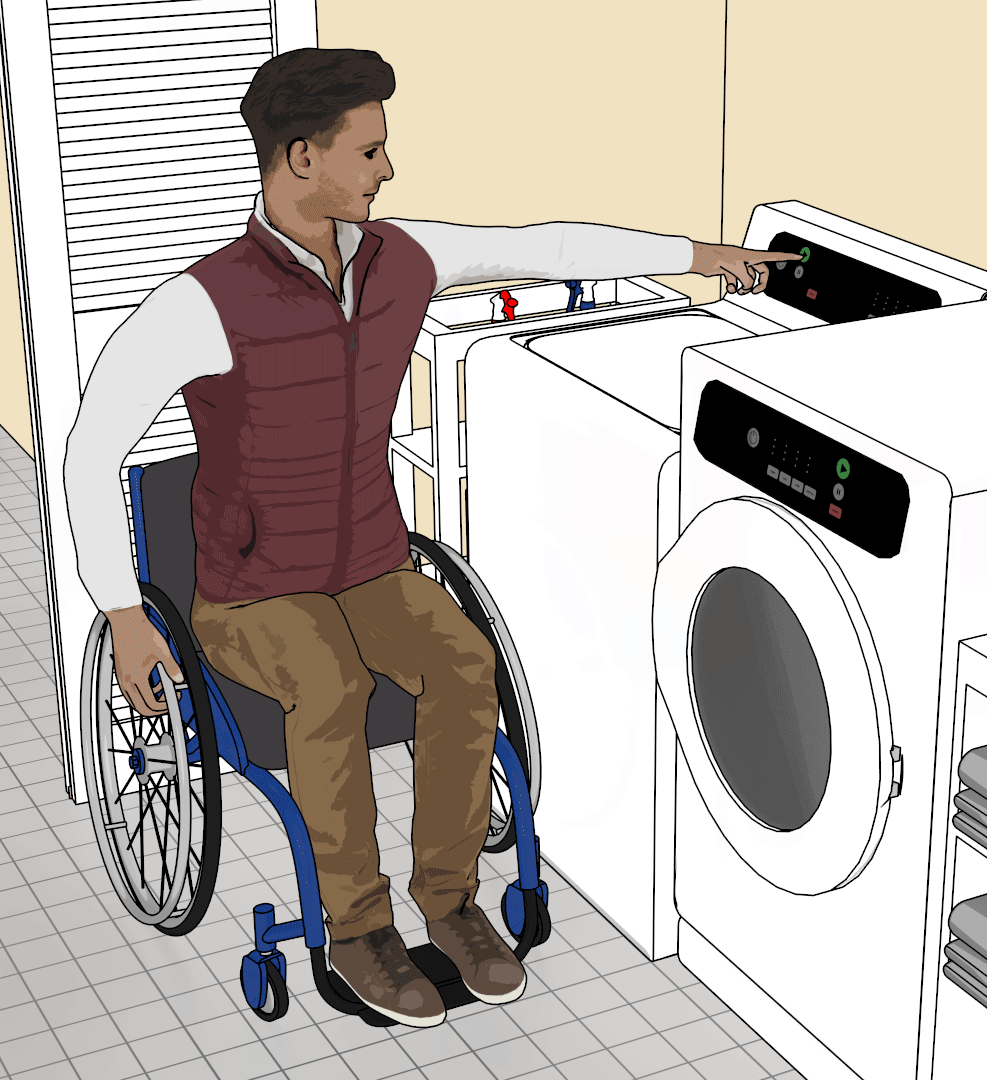Chapter 6: Washing Machines and Clothes Dryers
This guide explains requirements in the ABA Standards for washing machines and clothes dryers.

Required Compliance
[§F214]
Scoping for washing machines and clothes dryers is applied independently. Where up to three washing machines are provided, at least one must comply. If more than three washing machines are provided, at least two must comply. The same level of accessibility is required for clothes dryers.
These requirements apply to various types of laundry facilities, including, but not limited to, those serving residential dwelling units, dormitories and other types of transient lodging, laundromats, and recreation facilities.
Washing machines and clothes dryers only used by employees to perform work are not required to comply, although compliance is advisable (§F214.1 Ex.).

Washing Machines and Clothes Dryers
[§611]
The Standards address both top-loading and front-loading washing machines and clothes dryers. Requirements address clear floor space, operable parts, and height.

Clear Floor Space
[§611.2]
Clear floor space must be centered on the appliance and positioned for a parallel approach. Enclosures, including doors when open, cannot overlap or obstruct the clear floor space. Where clear floor space is recessed in alcoves and confined on three sides, additional maneuvering clearance is required. (See the Clear Floor or Ground Space and Turning Space Guide)


Height
[§611.4]
Height of top-loading machines must be 36" maximum above the finish floor. For front-loading machines, the height of the bottom of the opening of the door must be between 15" and 36" above the finish floor.

Operable Parts

Operable parts of machines, including controls, doors, detergent and bleach compartments, and lint screens must comply. They also must be within accessible reach range and usable with one hand and without tight grasping, pinching, twisting of the wrist, or more than 5 pounds of force.
Coin slides or payment units need to comply with operable parts requirements. Change machines and vending machines also must comply (§F228.1).
Obstructed Side Reach and Unit Height
[§308]

Although top-loading washing machines create an obstruction for users with side reach to operable parts, washing machines and clothes dryers are permitted to be 36" maximum in height above the finish floor (§308.3.2, Ex. 1). The side reach for parallel approach is 24" maximum depth.

Common Questions
Can a combination single-unit washer and dryer be used if compliant?
An all-in-one unit with a single drum that functions as both a washer and a dryer can be used if it complies with all applicable requirements. If separate washers and dryers are otherwise provided, then it is important that accessible washers and dryers also be separate appliances for equivalent usability and convenience. Where appliances are stacked, including combination washers dryers, accessible units typically need to be separate (i.e., side-by-side) to meet reach range and door opening requirements.
Are washers and dryers used by employees required to comply?
Washers and dryers used only by employees for work purposes, such as those in laundry rooms used by staff in hotels and hospitals, are not required to meet accessibility requirements. However, washers and dryers provided for non-work use by employees, such as those in laundry facilities in an employee dormitory, are required to comply.
Can closet or laundry room doors overlap clear floor space at washers and dryers?
No. Closet or laundry room doors must fully clear the required wheelchair space when open.
Do compliant washers and dryers need to be labeled as accessible in laundry facilities with multiple washers and dryers?
No. However, in laundry facilities where not all appliances are accessible, it is advisable to identify those that are with the International Symbol of Accessibility.
Do portable or temporary washers and dryers need to comply?
Yes. Where three or fewer portable or temporary washers are provided, at least one must comply. Where more than three washers are provided, at least two units must comply. The same scoping applies to dryers.
September 2021




